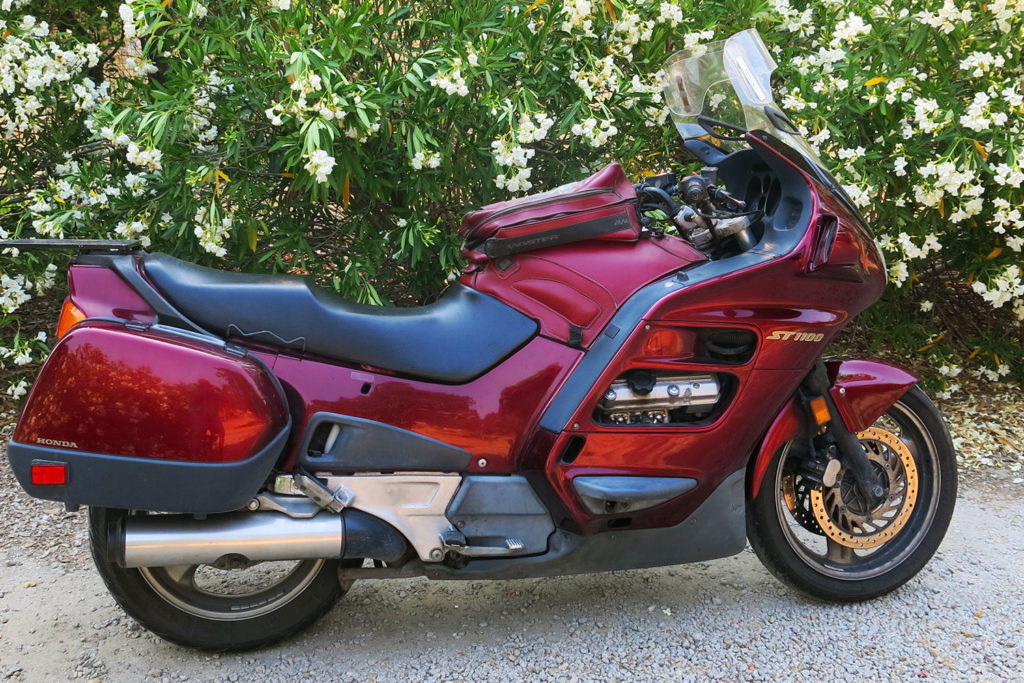
YEAR/MODEL: 2002 Honda ST1100
OWNER: Clement Salvadori
HOMETOWN: Atascadero, California
Back in the late 1980s, the European market was as important to Honda as the American one. And motorcycles were popular, as cars and car insurance were more expensive than they were here. The demand was quite different, with Yanks liking big cruisers and narrowly focused sporting machines, while those east of the Atlantic had more of a practical approach, favoring motorcycles that could be used to commute on workdays, and then go two-up on a vacation.
Each motorcycle company is constantly looking around to see what the competition is doing. The Japanese Big Four undoubtedly have their own domestic spying networks, trying to keep track of each other’s doings, but there are also the local manufacturers. In the U.S., the only indigenous competition was from Harley-Davidson, but in Europe numerous homegrown marques were taking their share of the market.
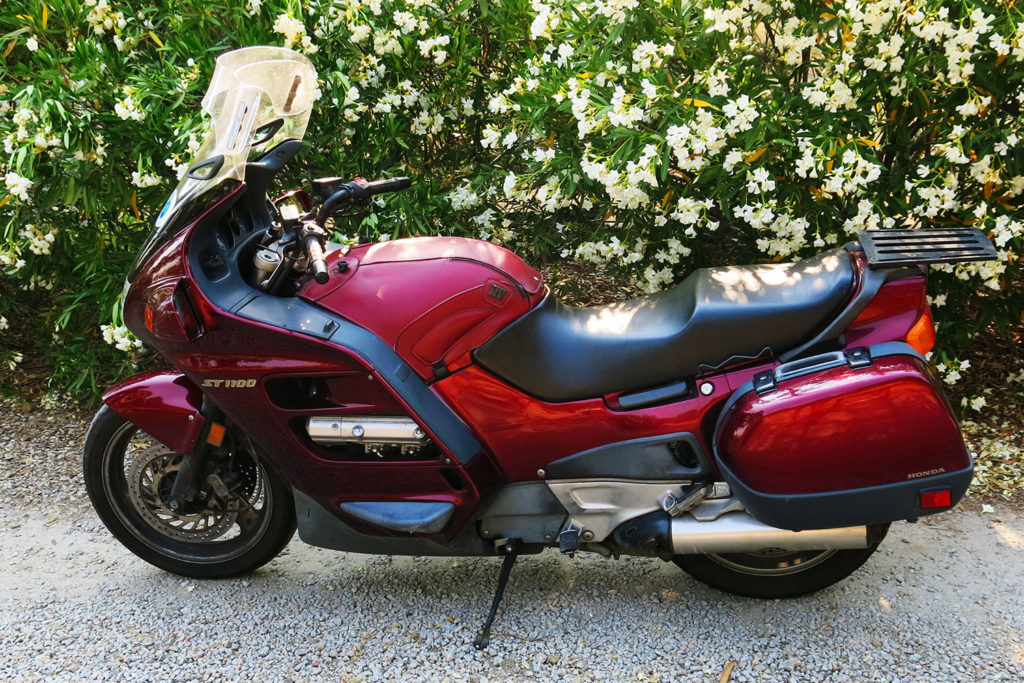
In the late 1980s, BMW, with its new four-cylinder K-bikes, was doing quite well in the touring market. The head of Honda Germany decided he wanted a piece of that action and got permission from Japan to design his own bike, a sport-touring model, with emphasis on touring but still agile.
Hence the ST1100, introduced in Europe in 1990 as the Pan-European, with a wind-protecting fairing, removable saddlebags, and shaft drive. Ride to work in the rain, load the bags for a trip, and never have to worry about cleaning and adjusting a chain. This was an all-new machine, with a transverse-mounted (meaning the crankshaft was at a right angle to the axles) V-4 engine, putting out close to 100 rear-wheel horses.
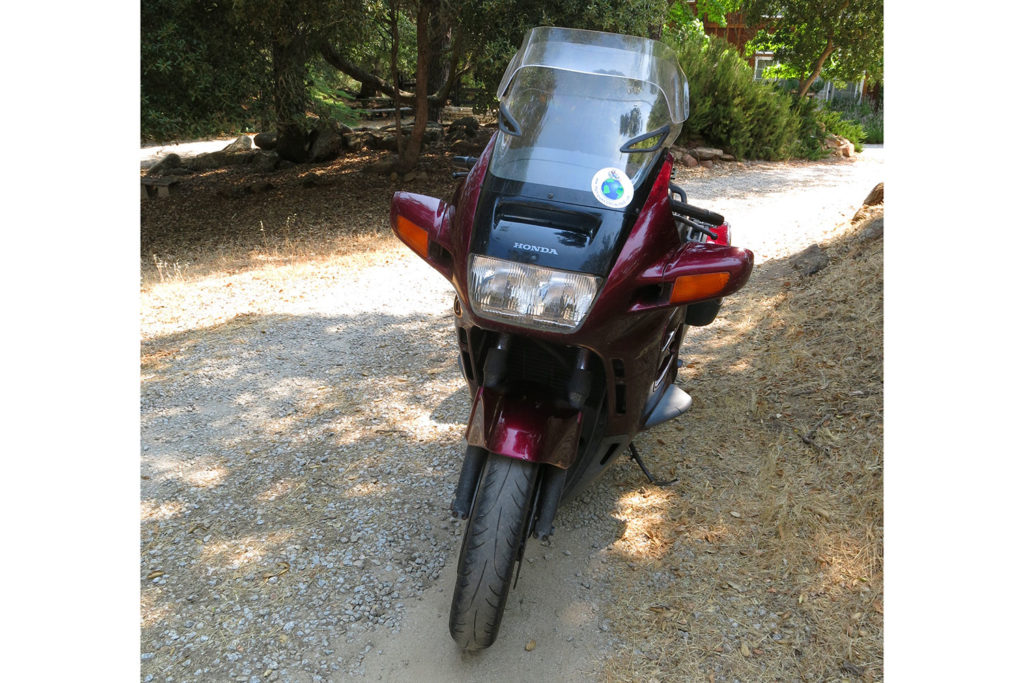
This was no lightweight, as the ST weighed about 700 pounds with the huge 7.4-gallon gas tank filled. But the blessing was that the tank was beneath the seat, keeping the weight down low, which is where many sensible touring riders like to have it. That required a fuel pump pushing the gas up to the four 34.5mm Keihins – carburetors in the coming age of fuel injection. No matter, as the carbs did an excellent and trouble-free job of keeping the engine spinning. A choke lever on the handlebar was a reminder of the carburetors.
The liquid-cooled V-4, with a bore of 73mm and a stroke of 64.8mm, had a total capacity of 1,084cc. It used double overhead camshafts, with a single timing belt running all four camshafts and four valves per cylinder. Valve adjustment was by shims, not always appreciated by home mechanics, but service intervals were set at a fairly lengthy 16,000 miles. Ignition was transistorized, with electronic advance. And the oversquare engine pulled strong all the way from 2,000 to the 8,000-rpm redline.
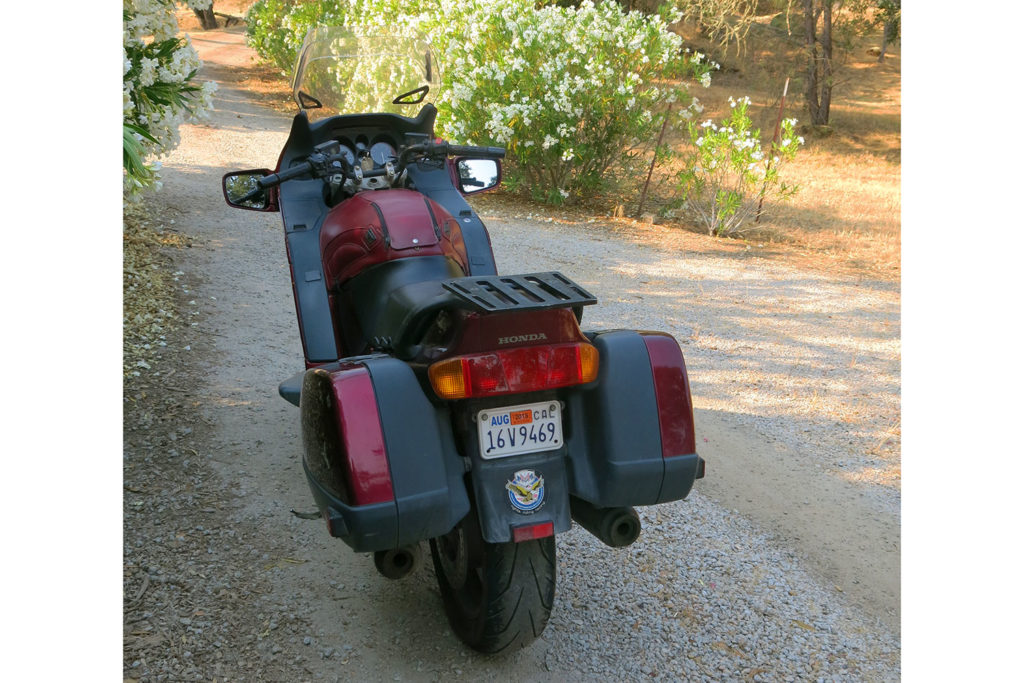
Down in the bowels of the wet-sump engine, everything was built to last, with almost four quarts of oil capacity and a cooler up front. It sat in a full-cradle steel frame (contributing to the bike’s hefty weight), which gave confidence to the rider when leaning hard into the curves at considerable speeds. Up front was a 41mm Showa cartridge fork, with Honda’s TRAC anti-dive mechanism and allowing nearly 6 inches of travel. No adjustments here. At the back, a single Showa shock, with adjustability for rebound damping and spring preload, offered nearly 5 inches of travel.
The longitudinal power ran back through a wet clutch and a cassette-style 5-speed transmission to the driveshaft. Aluminum three-spoke wheels used an 18-inch 110/80 tire on the front, a 160/70 17-incher on the back, with a shade over 61 inches between the axle centers.
The Europeans loved it – perhaps for no better reason than it was a good alternative to the BMWs, along with a bit more power. The American market got to see this bike a year or so after it was released east of the Atlantic. Several improvements were made after that first version, including raising the alternator output from 28 to 40 amps and offering a combined ABS and traction control system. The initial ABS, running from 1992 to ’95, had separate systems on the front and rear wheels, but an upgrade for ’96 used linked brakes. A mild upgrade of the windscreen arrived for the 1995 model year.
Most important for a motorcycle of this design is comfort. On this ’02 model, which belongs to yours truly, a Laminar Lip was added to the top of the windscreen to smooth airflow around my helmet, since I’m taller than average. A nice addition is over to the left of the instruments, where a hand-turned knob can alter the angle of the dual halogen lights; very simple, very useful. Fitting a tankbag on the plastic cover over the engine was simplified by a company called Bagster that makes Naugahyde covers for over 200 motorcycle models, to which a bag can be neatly clipped. That bag has logged a lot of miles, as I had it on my ’92 model, which was sold after 93,000 miles, and then on my then-new ’02 ST1100, which has 103,000 miles and counting.
The flattish saddle is comfortable for long two-up days, or even longer solo days, allowing the rider to move back and forth. The saddlebags are locked onto the bike, but they can be removed with only minor fuss. However, it is far more useful to have liners in the bags; just open the bags, take out the liners, and you are on your way.
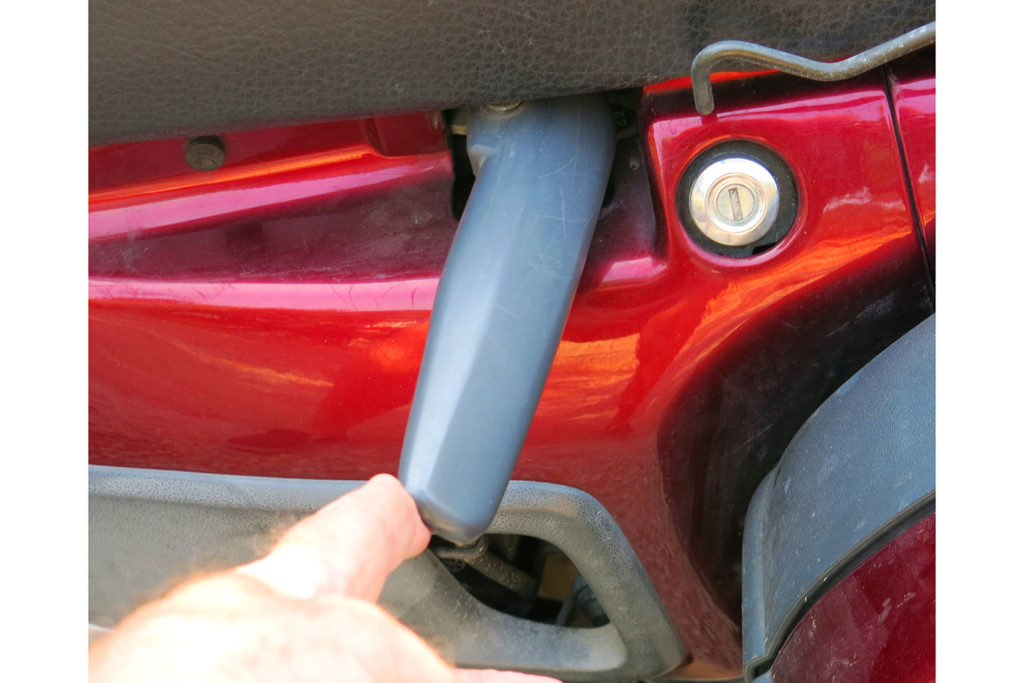
A convenient frill on the ST is the handle under the left side of the saddle, which folds against the bike until pulled out 90 degrees to be very useful when lifting the bike onto the centerstand. Another much appreciated addition is the concealed crash bars on the fairing, allowing for a slow fall without doing any damage.
Big smiles could be seen at Honda Germany after the ST1100 appeared. They had given the competition a good kick in the old wazoo, with the ST soon winning all sorts of awards. And it was pretty much left unchanged for the next dozen years until the ST1300 debuted in 2003.
Throw a leg over that saddle, turn the key, push the button, clutch in, click into first, and the sheer, silent rush of power is exhilarating. And 500 miles with one fuel stop in between is always a temptation.
The post Retrospective: 1990-2002 Honda ST1100 first appeared on Rider Magazine.
Source: RiderMagazine.com
